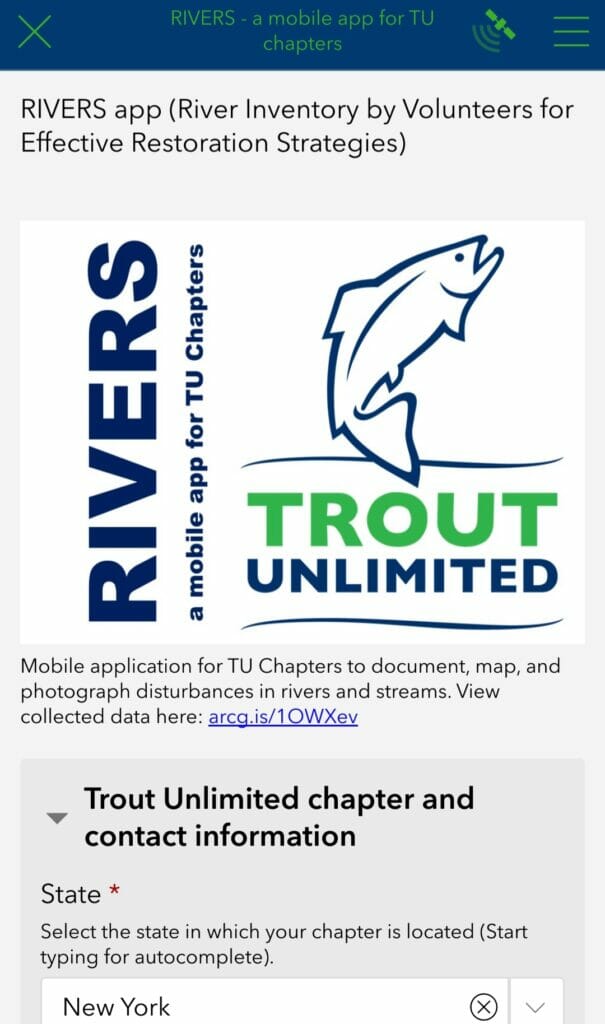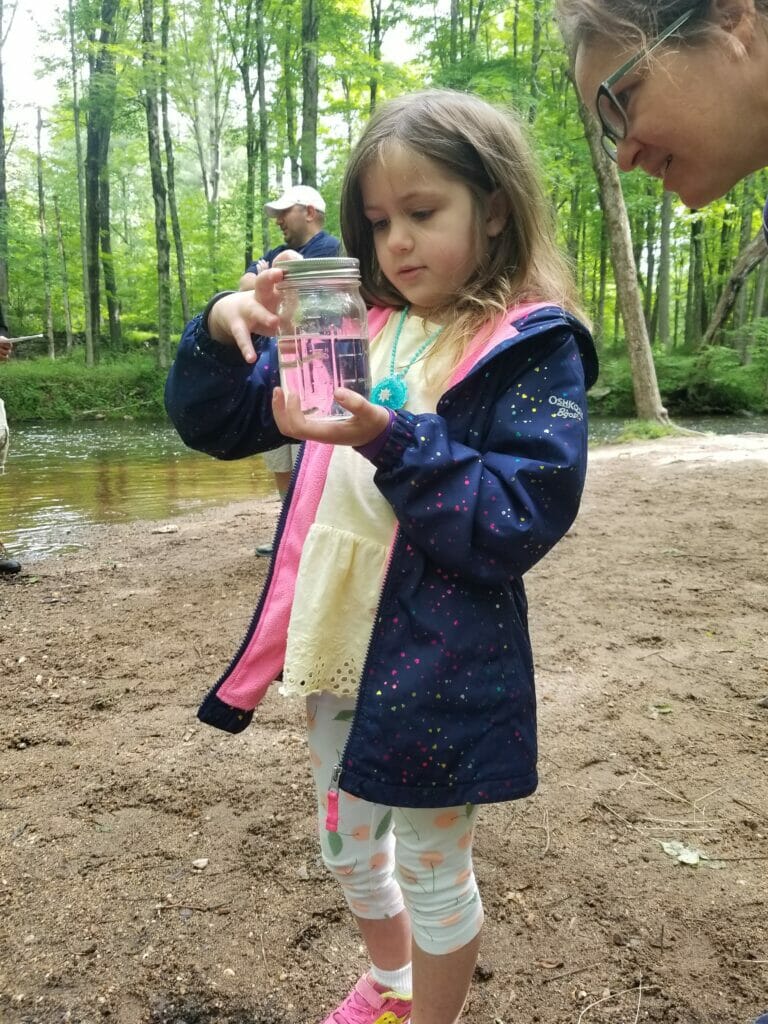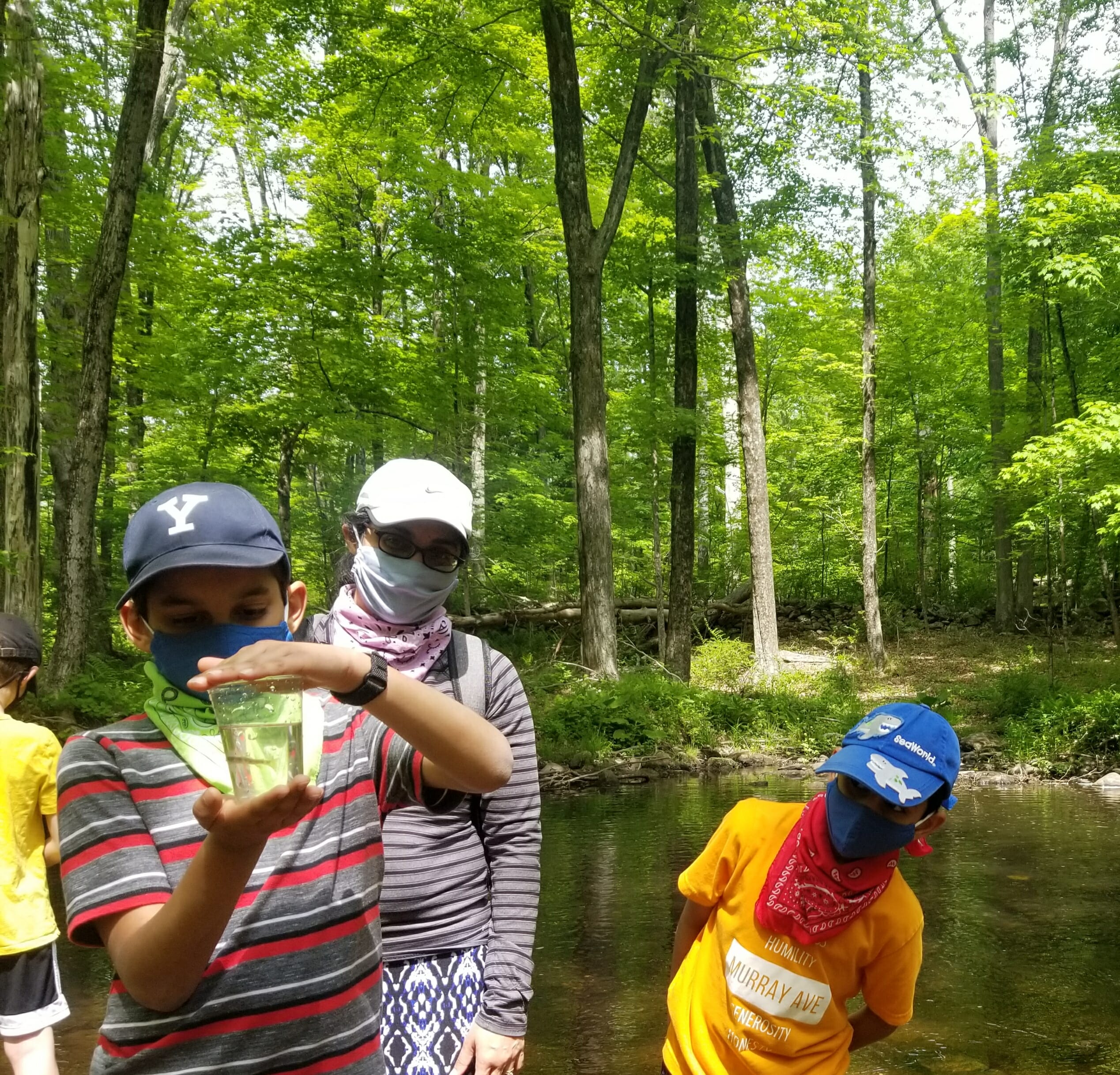Check out Trout Unlimited’s Summer of Science activities
The day we look forward to and are sad about at the same time came on May 22 as our New York Trout in the Classroom Think Tank fingerlings were released into their watershed home.
The 50 baby trout were carefully given their freedom into the Cross River with help from Croton Watershed Trout Unlimited volunteers, our partners at Trailside Museum, Department of Environmental Protection and a handful of families.
Do you think these fingerlings will be able to make it in the wild? While we were able to collect and observe a nice diversity of macroinvertebrates, and water chemistry checked out great, we were surprised by the water temperature—it was 66 degrees, an increase from this time last year.
Each year we notice changes happening in and around the river, and these types of observations, when recorded, can be important data for scientific discovery and decision-making.
This year, as part of our trout releases, we also used TU’s Rivers App to help us document and assess the health of our trout stream. In addition to measuring temperature, pH, ammonia, and nitrate, we made stream observations that included checking for disturbances, such as invasive species, erosion, and litter, and riparian health, such as tree cover and buffer area. Our plan is to continue to document these observations, every year, so that we can better understand and take care of these important watershed resources.

This type of community science can be fun, help you learn more about different branches of science, and maybe lead to some interesting discoveries/ And while TU’s Rivers App can be used to document any water body, there are other ways you engage in community science online from climate change data collection and measuring light pollution to observing fireflies. For other fun things to do check out Trout Unlimited’s Summer of Science.

While our fingerlings are no longer in the tank, our shared responsibility to care for them will continue. We will always be connected to trout by the water and forest resources that we share and by our appreciation for nature.
Science Journal Question for TIC Students: What are some simple ways you can help to take care of the home for our newly released trout?
Hands-on STEM for P-8: Make a Nature Observation Journal — make a simple nature journal (instructions below) using cardboard, rubber band or string, and recycled printing paper. Spend some time this summer to write or draw your observations about the sky, trees, and water bodies around your neighborhood.
Dive even deeper: What natural changes might be causing the stream temperature to change from year to year? How do you think climate change and warming streams might impact trout?
Hands-on STEM for 6-12: Smart Phone Science Find a body of water nearby, download the Survey 123 App onto your smartphone or tablet to try a hand at Citizen Science using TU’s Rivers App.
Recycled materials nature journal
This home-made nature journal can be used take notes, record data, and draw your observations.
What you need:
- 1 piece of 8.5 x 11-inch cardboard from a recycled cereal box
- Scissors
- Recycled paper with at least one blank side
- Hole punch
- Stick
- Rubber band
1. Fold your piece of cardboard in half to make a front and back cover for you journal.
2. Cut 15 to 20 pieces of paper for the inside of the journal with the blank pages facing up. The paper should be the same size as the front and back cover.
3. Take the cover and punch 2 holes on the left edge, one hole about an inch from the top and another hole about an inch from the bottom.
4. Using the cover as your guide, punch matching holes in the rest of the paper.
5. Find a straight stick that is longer than the distance between the two holes. This will keep the nature journal together.
6. Wrap the rubber band around the top of the stick. Thread the other end of the rubber band through the top holes of the cover and papers.
7. Pull the end of the rubber band along the backside of the journal and up through the bottom holes of the paper.
8. Wrap that end of the rubber band around the bottom of the stick.
9. On the front of your journal you will see the stick with a loop around the top and the bottom of it. On the back of your journal you will see a rubber band stretched between the two holes.
10. Now your journal is secure and ready for collecting data and recording observations.
Lillit Genovesi is the Trout in the Classroom Coordinator over NYC & Watersheds.



